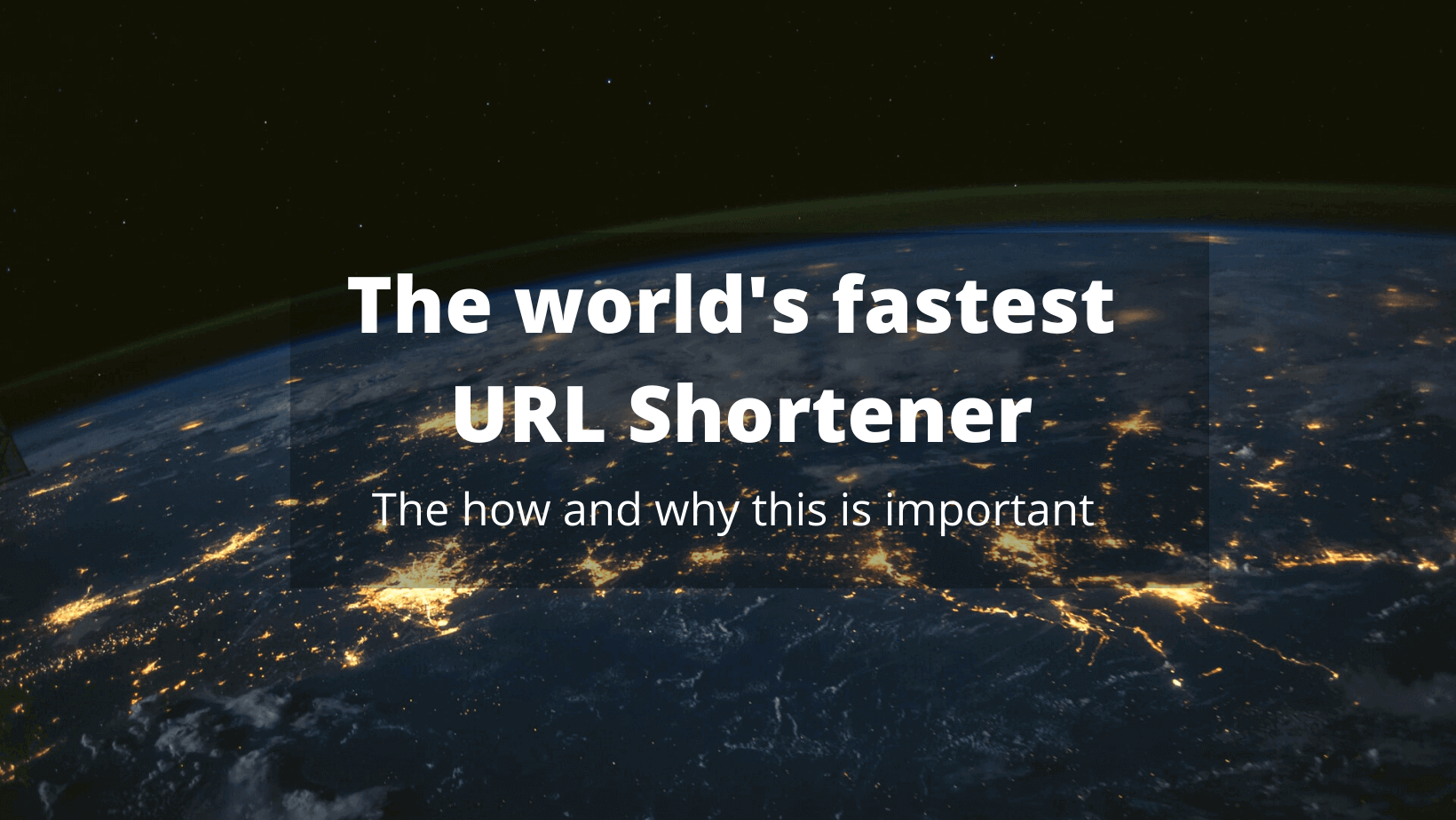
World's fastest URL Shortener
WarpURL is the world’s fastest URL Shortener, this is quite a bold claim for such a new shortener & startup. Let’s start by looking at what a URL shortener does, how it is done and then what WarpURL is doing differently.
How does a URL Shortener work?
A URL shortener turns a long URL into a shorter URL so that it saves space on the platform it is being shared on, like Twitter, LinkedIn and SMS. When a user clicks on the short URL, it goes to a server and returns the long URL to the browser which then navigates the user to the destination.
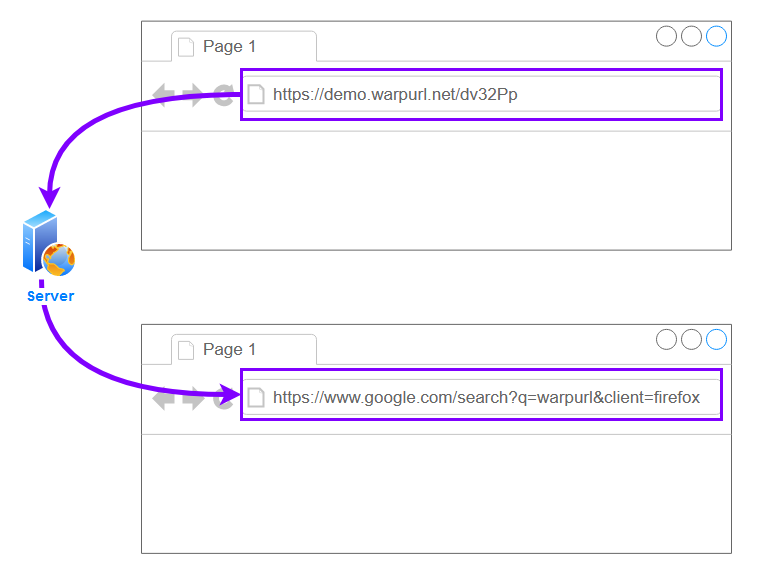
What the image above does not take into account, is the distance the user is from the server that tells the browser to redirect the short URL: https://demo.warpurl.net/dv32Pp to the long URL: https://www.google.com/search?q=warpurl&client=firefox.
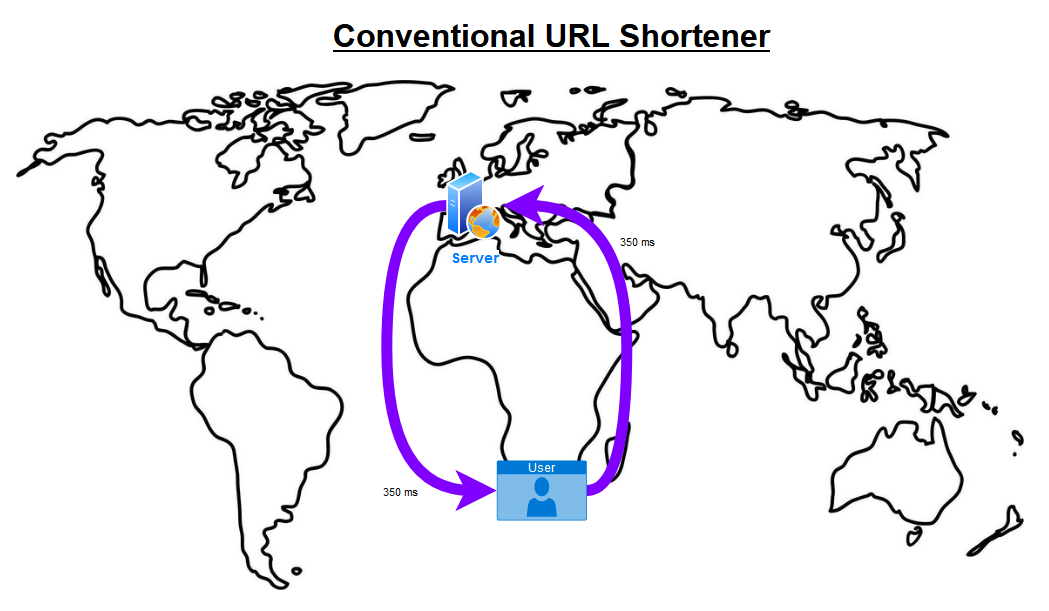
As soon as we factor in the distance, we notice that it takes 350ms for the user’s browser to reach the server and then another 350ms for the server to respond to the user’s browser with the longer/destination URL. That totals to 700ms that the user must wait after clicking on the short URL to get to the destination. The actual latency between South Africa and Frankfurt is around 350ms, just to give a better grasp of scale on the map.
We aren’t the only once that noticed this, Pingdom wrote two articles: Is Goo.gl really the fastest URL shortener? and URL shortener speed and reliability shootout. Where they also benchmark the redirect times of URL shorteners. Those articles are over 10 years old but the data that they collected is quite similar to what we have found in the URL Shortener Latency Comparison. We just added extra detail like consistency and then also went the extra mile to plot every region that URL Shortener was pinged from.
What is WarpURL doing differently?
WarpURL brings the server as close as possible to the user that clicks on the link. Data is stored in 13 regions around the world and the user is then directed to the closest server.
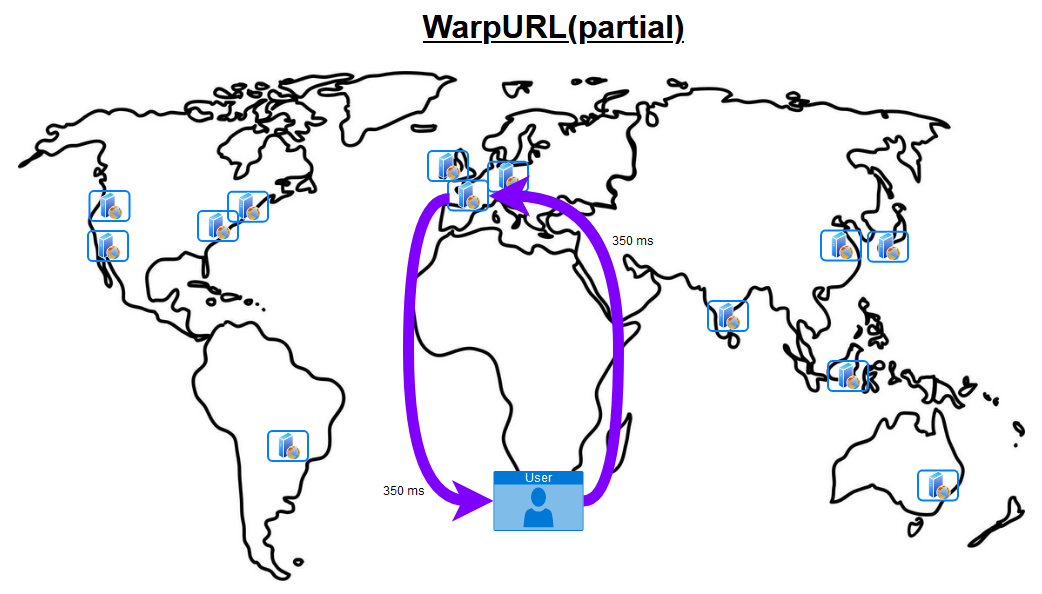
This wasn’t fast and consistent enough for WarpURL to be named the fastest URL Shortener, we also leverage a Content Distribution Network (CDN). A CDN is used to store the short URL of the long url in a Point Of Presence (POP) server. There are many of these POP servers all over the world, they are as close(country/city) to the user as possibly can be, their job is simple.
After a user clicked on link it will be cached(saved) at the POP server so that if any user in that region/city visits the same short URL, the long URL does not have to be fetched from the server. It is already in the “smaller” POP server next to the user(s) in that area. Everyone in that area(country/city) will benefit from this speed improvement.
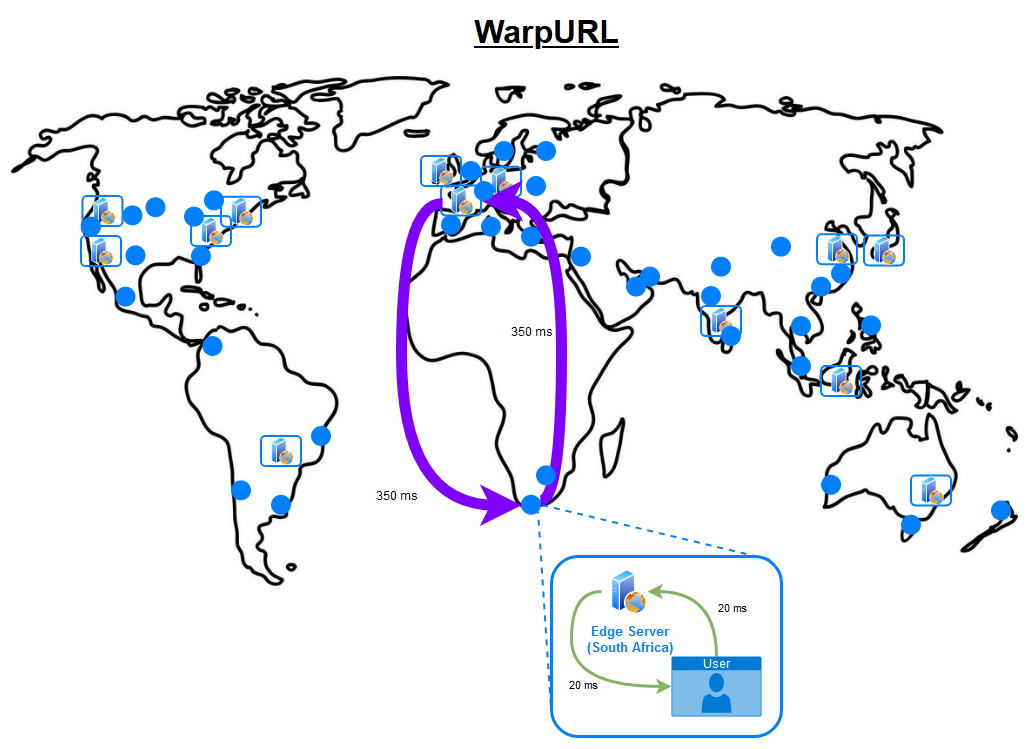
We actually can not draw the POPs(blue dots) on the map without almost coloring the whole map blue! At the time of writing WarpURL has main servers in 13 regions and is making use of 225+ POPs in 90 cities across 47 countries. See this article to get information on the CDN technology we leverage.
With the first link lookup(short to long URL) WarpURL is just as slow as normal URL Shorterners. Once the value is cached in the POP closest to that user, WarpURL achieves incredible speeds for everyone in that area(city/region) that clicks on that link. A speed increase between 5 to 7 times faster can be observed and it is about 5 times more consistent across the world.
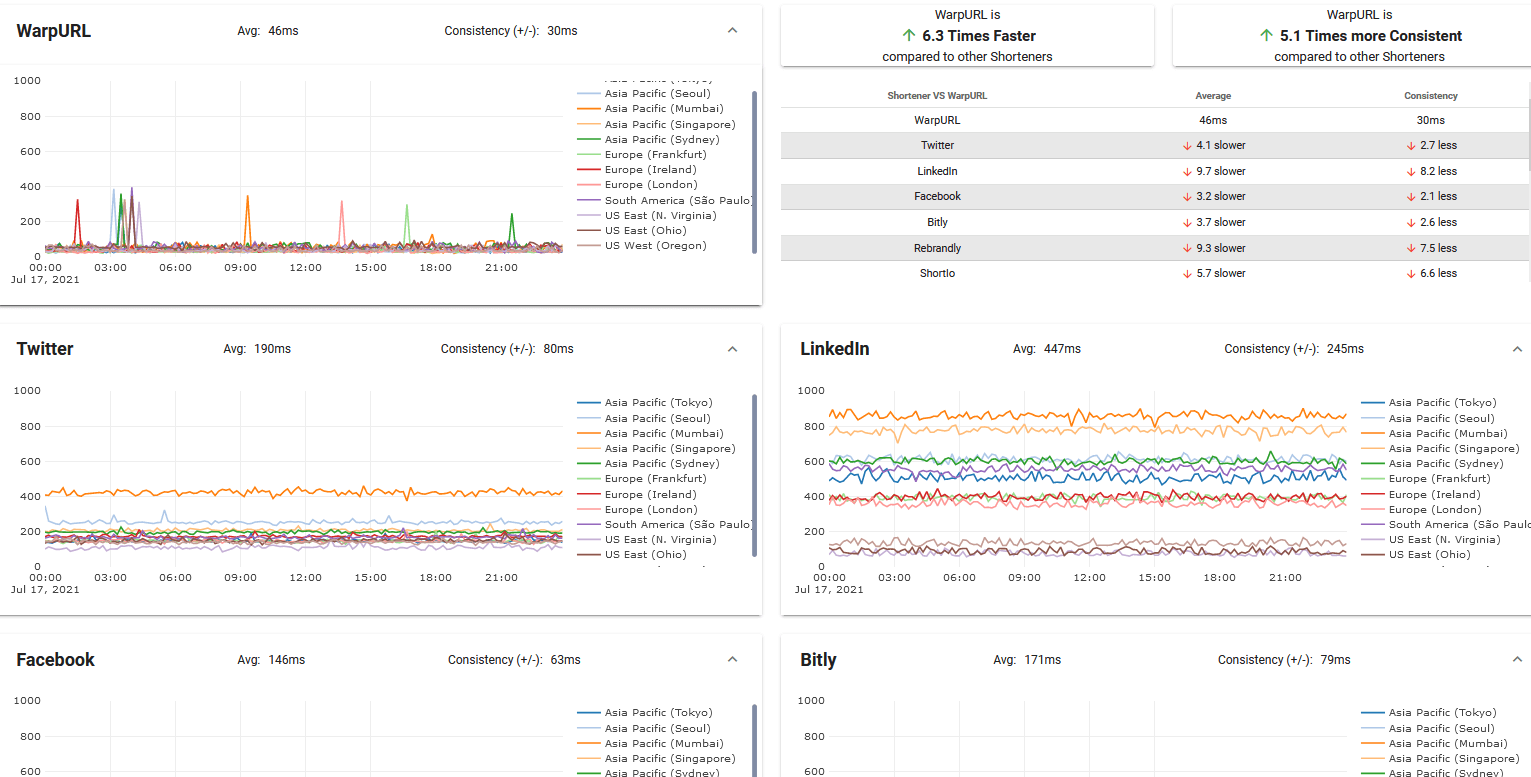
See the URL Shortener Latency Comparison page for live data. The method used to draw these charts is to ping every URL Shortener in our list (15 at the moment) every 10 minutes. Each ping consists of visiting the short URL 5 times and measuring the average time it takes to redirect to the long URL. This is then stored in a database and shown on charts.
Why save a few 100ms on every click?
With conventional URL Shorteners, every user, for every click in South Africa has to wait 700ms when they navigate the short URL to get to the long URL. This is quite a long time that your users wait before they even reach your site, staring at a blank screen.
Then only after the long/destination URL is returned does your site begin to load, which takes another 1-3 seconds on average. Studies have found that 100ms can cost you as much as 1% in revenue and that 53% of users abandon the request if it takes longer than 3 seconds to load.
Social media sites will shorten your already shortened link with their own shortener, I call this double linking. On average a user in Mumbai clicking on a Bitly link shared on LinkedIn adds ~1100ms. So it forces the user to wait more than 1 second before they even reach your website! More details in the blog post we wrote on Double Linking.
Unfortunately, we can’t control the latency the social media sites add *yet, but we can control the latency of the URL shortener we use.
WarpURL uses smart caching to bring the URL as close as possible to the user. The time that is saved translates to:
- Giving time back to your users as a collective.
- Involving less servers and compute intensive operations, reducing your carbon footprint and contributing to a better tomorrow.
The unfortunate truth about URL Shorteners - It forces latency onto every link and person! Billions of links are clicked every day, billions of seconds wasted.
